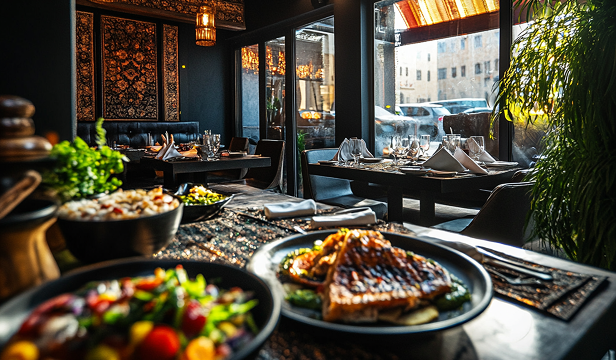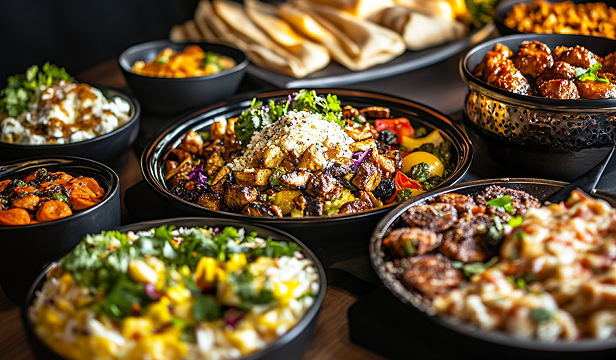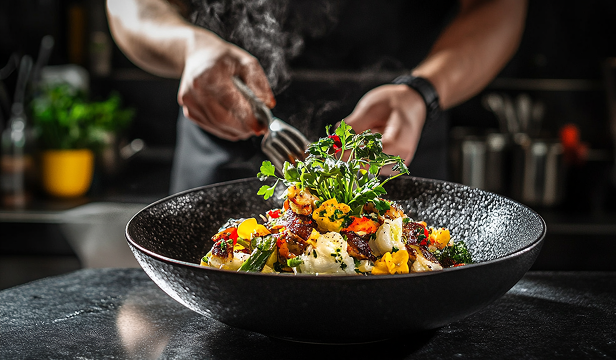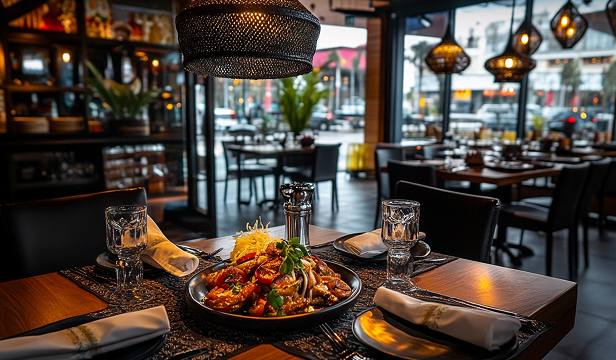Introduction Middle Eastern art is renowned for its intricate patterns, rich colours, and deep cultural…

The Role of Art in Middle Eastern Hospitality and Dining Spaces
Introduction
Art has always played a fundamental role in Middle Eastern culture, from intricate calligraphy and elaborate geometric patterns to vibrant paintings and sculptures. In hospitality and dining spaces, art is more than just decoration—it creates an immersive atmosphere, enhances the dining experience, and reflects cultural identity. This article explores how art influences Middle Eastern hospitality and dining, shaping the aesthetics and emotional appeal of restaurants, hotels, and social gatherings.
The Cultural Significance of Art in Hospitality
Middle Eastern hospitality is deeply rooted in traditions of warmth, generosity, and storytelling. Art serves as a visual expression of these values, transforming hospitality spaces into places of beauty and cultural connection. Key artistic elements include:
- Islamic Calligraphy: Arabic script adorns walls, menus, and tableware, often featuring poetry, religious verses, or philosophical sayings that enrich the ambiance.
- Geometric Patterns: Inspired by Islamic art, symmetrical patterns are used in tiles, furniture, and decor, creating a sense of harmony and elegance.
- Textiles and Carpets: Handwoven rugs and tapestries, often featuring intricate designs, add a sense of history and craftsmanship to dining spaces.
- Mosaic and Ceramic Art: Colorful mosaics and ceramics, common in Middle Eastern architecture, are used to embellish tabletops, walls, and flooring.
Creating Atmosphere Through Art
Artistic design choices influence the overall ambiance of hospitality and dining establishments, affecting the way guests perceive and interact with the space. Some key ways in which art contributes to the dining experience include:
- Enhancing Visual Appeal: The use of bold colours, intricate patterns, and statement pieces creates a visually stimulating environment.
- Setting the Mood: Traditional or contemporary artworks can evoke a specific atmosphere, whether it be luxurious, relaxed, or intimate.
- Cultural Storytelling: Art tells the story of a region’s heritage, giving diners a deeper appreciation for the culinary and historical context of their meal.
- Encouraging Social Interaction: Eye-catching art installations and decor elements serve as conversation starters, making dining experiences more engaging and memorable.
Art in Modern Middle Eastern Dining Spaces
While traditional art remains central to Middle Eastern hospitality, contemporary interpretations are also emerging, blending heritage with modern aesthetics. Trends include:
- Minimalist Arabic Calligraphy: Modern restaurants incorporate sleek, contemporary typography alongside traditional script for a fusion of old and new.
- Interactive Art Installations: Digital projections, immersive murals, and light displays create dynamic, ever-changing dining environments.
- Fusion of Traditional and Contemporary Materials: Designers use a mix of handcrafted elements with industrial materials to achieve a modern yet culturally rooted aesthetic.
- Culinary Plating as Art: Chefs are increasingly treating food presentation as an art form, inspired by Middle Eastern artistic principles such as symmetry, colour balance, and ornamentation.
The Role of Art in Hospitality Architecture
Middle Eastern hospitality spaces, including hotels and luxury resorts, often incorporate grand artistic statements within their architectural design. Features include:
- Ornate Ceilings and Domes: Intricate hand-painted ceilings, often gilded with gold, create a sense of grandeur and tradition.
- Indoor Courtyards with Artistic Fountains: Many dining spaces feature water elements surrounded by mosaic tiles, reminiscent of classical Islamic gardens.
- Large-Scale Murals and Sculptures: Hotels and fine-dining establishments commission local and international artists to create bespoke pieces that enhance the cultural depth of the space.
Conclusion
Art is an essential component of Middle Eastern hospitality and dining spaces, blending tradition with modernity to create immersive experiences. Whether through calligraphy, mosaic work, contemporary installations, or artistic food presentation, art enhances the sensory and cultural appeal of hospitality settings. As the industry evolves, the integration of artistic expression will continue to shape how guests connect with and appreciate Middle Eastern culture through dining and hospitality.



